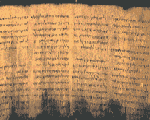




Provisions
The Treaty for the Prohibition of Nuclear Weapons in Latin America (also known as the Treaty of Tlatelolco) obligates Latin American parties not to acquire or possess nuclear weapons, nor to permit the storage or deployment of nuclear weapons on their territories by other countries. Besides the agreement among the Latin American countries themselves, there are two Additional Protocols dealing with matters that concern non-Latin American countries. Protocol I involves an undertaking by non-Latin American countries that have territories in the nuclear-free zone. Protocol II involves an undertaking by those powers which possess nuclear weapons.Status
On February 14, 1967, the Treaty was signed at a regional meeting of Latin American countries at Tlatelolco, a section of Mexico City. As of January 1, 1989, the Treaty had entered into force for 23 Latin American states. President Reagan ratified Protocol I in November 1981, and the US instrument of ratification was deposited in Mexico City on November 23, 1981.Documents
Primary documents, including treaty text and associated memoranda, statements and other related material, as well as official factsheets, announcements, briefings speeches and other related material.News
Chronological archive of news reports, commentary analysis and other related material.Related Web Sites
